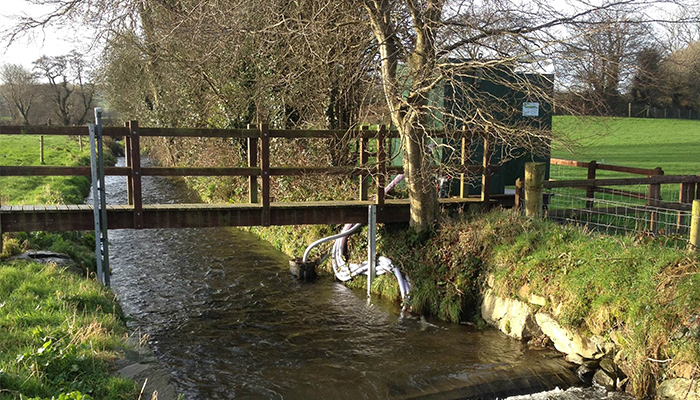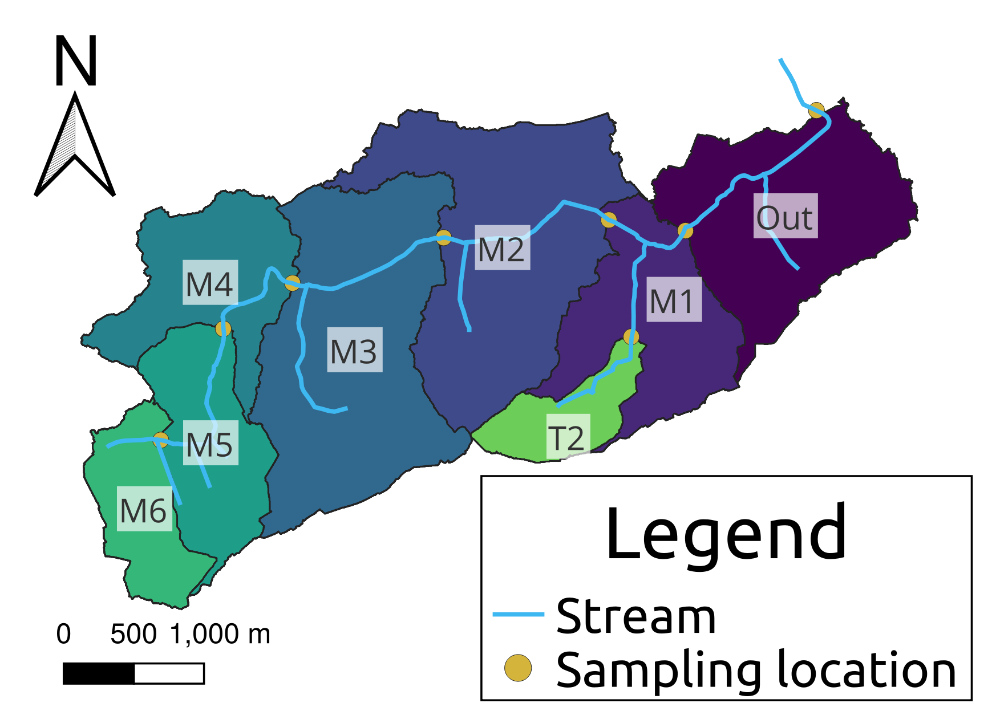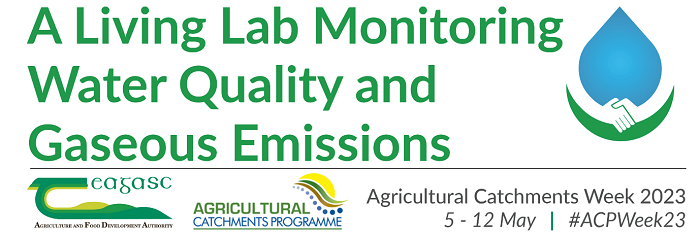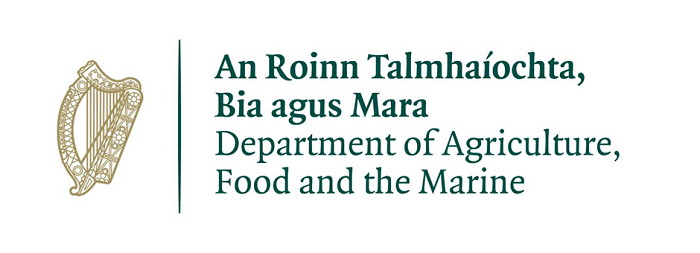10 May 2023
Water quality investigates – the sub-catchment approach

Traditionally research into stream water quality has be carried out on large scales, such as at regional scales.
This approach can allow a picture of water quality trends at the national scales to be identified relatively quickly and also keeps costs down if measurement points are to be sampled at regular intervals.
However, as Jason Galloway, Hydrochemist, Teagasc Agricultural Catechments Programme, explains, a drawback of this approach is that processes and trends occurring at smaller scales, for example at the reach scale (200-300m sections of a stream) can be masked by other trends occurring in the same area. For example, water quality in a particular area could deteriorate due to poor management practices (e.g. a leaking storage tank or a broken fence allowing animals access to water courses). If water from this deteriorating reach then mixes with water from other areas with improving water quality, the signal from the deteriorating reach can be masked or lost all together.
Therefore, in the Teagasc Agricultural Catchments Programme, we have adopted a ‘sub-catchment’ approach. The sub-catchment approach involves collecting water samples at various locations along the course of the streams, which are drained by the outlet. Each catchment is then broken down into smaller units, which we call sub-catchments. Together with information regarding the land use and management practices within different parts, this allows us to gain more nuanced insight into how different land use and management systems impact water quality. New insights and improved understanding of how sub-catchments function feeds back into improving our understanding of larger scale regional trends.
Figure 1. A map of the Ballycanew catchment split into sub-catchments

Key findings
One of the key findings from this work in Agricultural Catchments Programme is that we found no clear relationship between source nitrogen (N) loadings and stream water nitrate concentrations. In addition, our results highlighted the key role played by climate and the hydrological characteristics of catchments driving N loss from agricultural catchments. More details of this ongoing work will be presented at the Timoleague open Day on 12 May and will be available afterwards in the open day proceedings, which will be published here.
Agricultural Catchments week
This article is part of the Agricultural Catchments Week 2023, which is running from 5th to 12th May. The ACP is running a dedicated week of activities showcasing its research and advisory programme.

The theme for the week is ‘A Living Lab Monitoring Water Quality and Gaseous Emissions.’ There is a mix of in-person events, written articles, podcasts, and finishing with a public open day this Friday, 12th May at the water monitoring outlet in the Timoleague catchment located in Co. Cork. More details of the activities are available here.
Acknowledgement
The ACP is funded by the Department of Agriculture, Food and the Marine, and staff have been working with more than 300 farmers across six catchments in Ireland for over 10 years.

